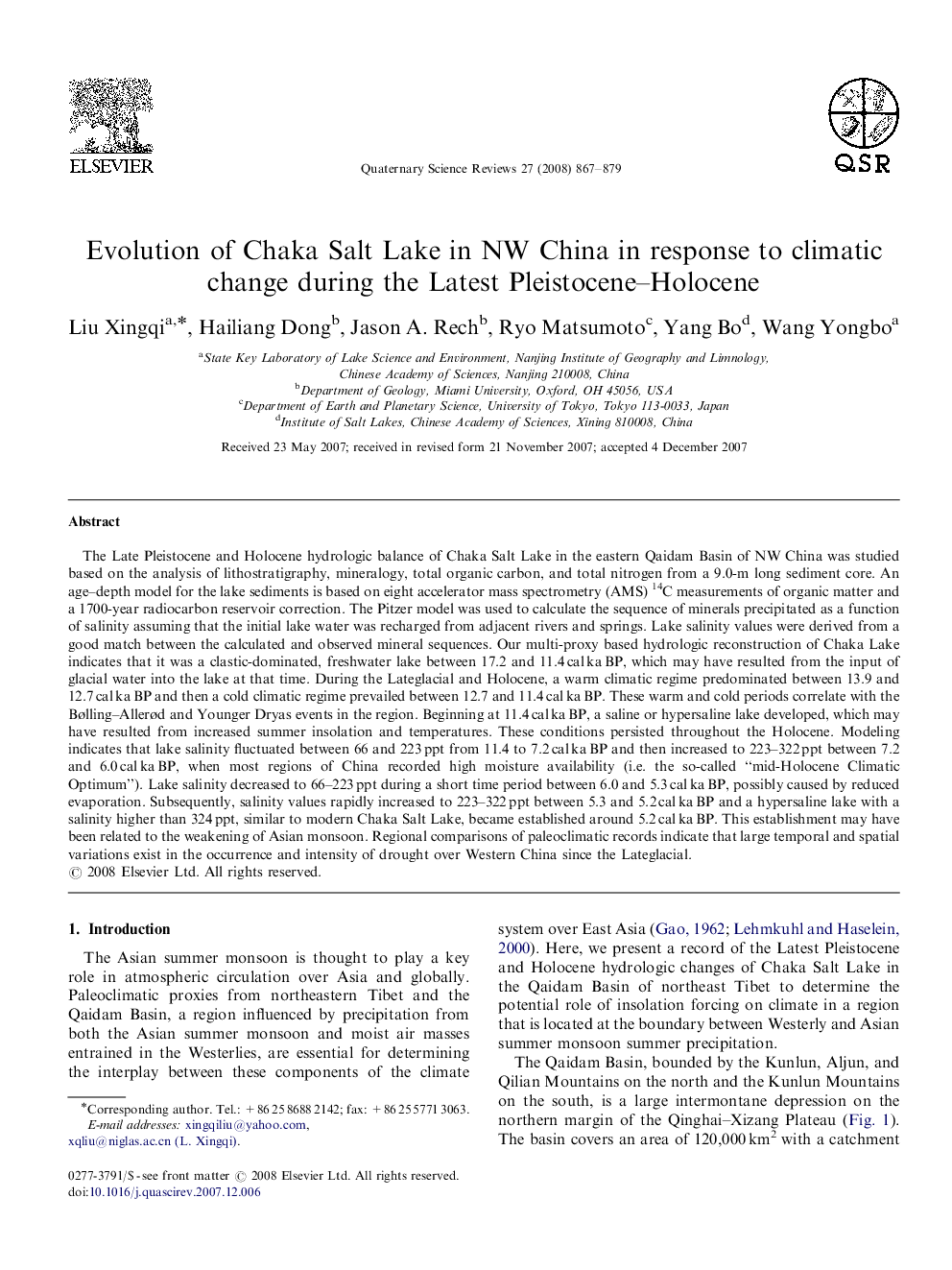| Article ID | Journal | Published Year | Pages | File Type |
|---|---|---|---|---|
| 6446284 | Quaternary Science Reviews | 2008 | 13 Pages |
Abstract
The Late Pleistocene and Holocene hydrologic balance of Chaka Salt Lake in the eastern Qaidam Basin of NW China was studied based on the analysis of lithostratigraphy, mineralogy, total organic carbon, and total nitrogen from a 9.0-m long sediment core. An age-depth model for the lake sediments is based on eight accelerator mass spectrometry (AMS) 14C measurements of organic matter and a 1700-year radiocarbon reservoir correction. The Pitzer model was used to calculate the sequence of minerals precipitated as a function of salinity assuming that the initial lake water was recharged from adjacent rivers and springs. Lake salinity values were derived from a good match between the calculated and observed mineral sequences. Our multi-proxy based hydrologic reconstruction of Chaka Lake indicates that it was a clastic-dominated, freshwater lake between 17.2 and 11.4 cal ka BP, which may have resulted from the input of glacial water into the lake at that time. During the Lateglacial and Holocene, a warm climatic regime predominated between 13.9 and 12.7 cal ka BP and then a cold climatic regime prevailed between 12.7 and 11.4 cal ka BP. These warm and cold periods correlate with the Bølling-Allerød and Younger Dryas events in the region. Beginning at 11.4 cal ka BP, a saline or hypersaline lake developed, which may have resulted from increased summer insolation and temperatures. These conditions persisted throughout the Holocene. Modeling indicates that lake salinity fluctuated between 66 and 223 ppt from 11.4 to 7.2 cal ka BP and then increased to 223-322 ppt between 7.2 and 6.0 cal ka BP, when most regions of China recorded high moisture availability (i.e. the so-called “mid-Holocene Climatic Optimum”). Lake salinity decreased to 66-223 ppt during a short time period between 6.0 and 5.3 cal ka BP, possibly caused by reduced evaporation. Subsequently, salinity values rapidly increased to 223-322 ppt between 5.3 and 5.2 cal ka BP and a hypersaline lake with a salinity higher than 324 ppt, similar to modern Chaka Salt Lake, became established around 5.2 cal ka BP. This establishment may have been related to the weakening of Asian monsoon. Regional comparisons of paleoclimatic records indicate that large temporal and spatial variations exist in the occurrence and intensity of drought over Western China since the Lateglacial.
Related Topics
Physical Sciences and Engineering
Earth and Planetary Sciences
Geology
Authors
Liu Xingqi, Hailiang Dong, Jason A. Rech, Ryo Matsumoto, Yang Bo, Wang Yongbo,
